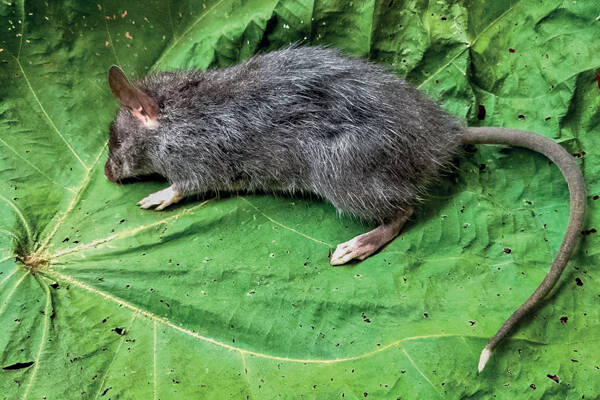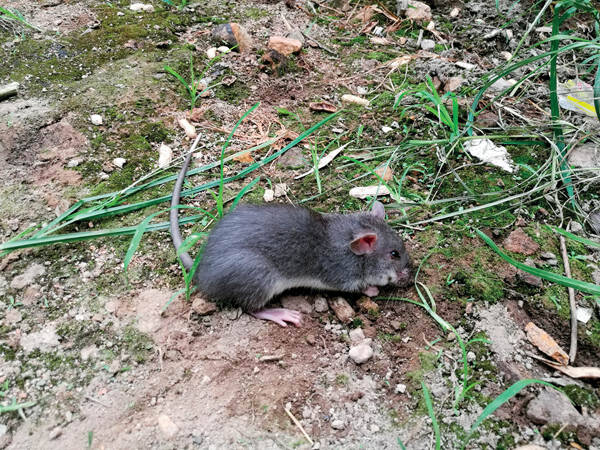Berylmys bowersi
IUCN
LCBasic Information
Scientific classification
- name:Berylmys bowersi
- Scientific Name:Berylmys bowersi,Green Rat, Mountain Rat, Green Rat
- Outline:Rodents
- Family:Rodentia Muridae L.G.Rat
Vital signs
- length:230-285mm
- Weight:
- lifetime:
Feature
It is a larger species of rodent in the family Muridae, with a slender body and a size similar to that of the white-bellied giant rat, but with a bluish-brown fur on the back and gray on the back of the front feet. There is a small white section at the end of the tail.
Distribution and Habitat
In China, it is distributed in the south, including southern Tibet, Yunnan, Guizhou, Hunan, Hubei, Jiangxi, Zhejiang, etc. Abroad, it is distributed in Vietnam, Myanmar, and Laos.
In summer and autumn, the blue-haired rat mainly lives in deep dense forests or under rocks on both sides of mountain streams. After winter, the blue-haired rat mostly lives at the foot of the mountain, and a few enter people's houses.
Appearance
The individuals are very large. The average body length is 250mm (230-285mm). The tail is longer than the body, 250-290mm. The hind legs are large, 48-61mm long. The back is gray-brown, and the ventral fur is pure white. The back of the tail is basically the same as the back of the body, and the ventral fur is slightly lighter. There is a small section of white at the end of the tail. This feature is only possessed by the blue-haired rat, which is different from other rats or giant rats.
Details
The blue-haired giant rat belongs to the subfamily Murinae. The genus Rattus was previously considered a subgenus of the genus Rattus, and was only promoted to an independent genus by Musser & Newcomb in 1983. The taxonomic status of this species is undisputed. Although this species is widely distributed, the population is very small. There were many reports in the past, but most of them were confused with the grayer individuals of the white-bellied giant rat (Leopoldomys edwardsi). Therefore, there are not many real blue-haired giant rat specimens in Chinese museums and little research.

The blue-haired rat is a large rodent species, and its number is relatively small in the rodent composition of Anhui Province. From the location where we caught blue-haired rats, such as Jialu Township, Ningguo County, we caught a total of 104 rats, of which 7 were blue-haired rats, accounting for 6.73% of the total number of wild rodent species. In the mountain survey of Xuancheng County, blue-haired rats accounted for 1.43% of the total number of wild rodent species, and blue-haired rats in Furongju, Huangshan accounted for 3.39% of the rodent species. From the perspective of the composition ratio of rodent species, it is basically a minority species. However, the composition ratio of the number of green-haired rats varies greatly in different seasons and habitats. According to the people of Jialu Township, Ningguo County, every year during the mushroom planting season, green-haired rats come down from the mountains to eat mushroom sprouts. The people can crush dozens of green-haired rats every night with stone slabs. According to the people of Furongju, Huangshan, in winter, green-haired rats and white-bellied giant rats sometimes become the two main types of rats indoors.
According to the people of Jiajialu Township, Ningguo City, green-haired rats like to eat mushrooms. Every year during the mushroom planting season, a large number of green-haired rats come down from the mountains to steal mushrooms, and a dung basket can be caught in one night. The stomachs of 7 green-haired rats were dissected, mainly starchy food and bamboo shoots, and green shoots and moss were also seen. There were rat hairs in 2 of the 7 stomachs. According to the residents of Huangshan Furongju, the number of house mice has dropped significantly after the green-haired rats and white-bellied giant rats entered the house in winter and preyed on other rats.
In March and October, 5 adult female mice were caught. No pregnant mice were found in the autopsy. One female mouse had 6 uterine scars. According to Zhan Shaochen (1981), the pregnancy rate in Fujian from October to November was 15.51%, the litter size ranged from 2 to 8, and the average was 4.22. Reproduction: In March and October, 5 adult female mice were caught. No pregnant mice were found in the autopsy. One female mouse had 6 uterine scars. According to Zhan Shaochen (1981), the pregnancy rate in Fujian from October to November was 15.51%, the litter size ranged from 2 to 8, and the average was 4.22.

Geographical distribution This species belongs to the Oriental kingdom. It is found in Indochina, the Malay Peninsula and Myanmar abroad. It is distributed in provinces south of the Yangtze River in China. It is found in the mountainous forest areas south of the Yangtze River in Anhui Province. Its vertical distribution in Huangshan is only found in mountains below 700 meters. Its distribution height reaches Songgu'an area. There is no green-haired mouse distribution in Pipeng and Beihai. Judging from the specimen collection location, the area with the most specimens is the evergreen broad-leaved forest in Jialu Township, Ningguo County, with an altitude of about 300-400 meters.
This species has been included in the "National List of Terrestrial Wildlife with Important Economic and Scientific Research Value" issued by the State Forestry Administration of China on August 1, 2000.
Listed in the 2013 Red List of Endangered Species of the World Conservation Union (IUCN) ver3.1--Low Risk (LC).








